Short Book Reviews
Hanna Kryszewska, Poland
Hanna Kryszewska is a teacher, teacher trainer, trainer of trainers. She is a senior lecturer at the University of Gdańsk, Poland. She is co-author of resource books: Learner Based Teaching, OUP, Towards Teaching, Heinemann, The Standby Book, CUP, Language Activities for Teenagers, CUP, The Company Words Keep, DELTA Publishing, and a course book series for secondary schools: ForMat, Macmillan. She is also co-author of a video based teacher training course: Observing English Lessons. Hania is a Pilgrims trainer and editor of HLT Magazine. E-mail: hania.kryszewska@pilgrims.co.uk
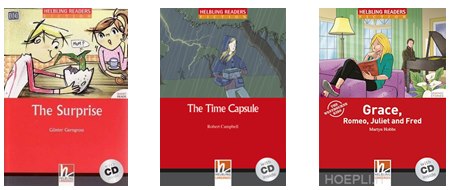
Helbling Readers Fiction. The Surprise. G. Gerngross. Helbling Languages. ISBN-978-3-99045-728-3, pp 32. The Time Capsule. R. Campbell. Helbling Languages. ISBN-978-3-99045-726-9, pp 96, Grace, Romeo, Juliet and Fred. M. Hobbs. Helbling Languages. ISBN-978-3-99045-727-6, pp 64. Books in this series of graded reading materials for teenagers come at five levels, for example The Surprise is pitched at level 2 (A1 Breakthrough/A2 Waystage), and so are The Time capsule and Grace, Romeo, Juliet and Fred. Each story has a message for the readers and promotes different values. On the language level, the learners first become familiar with some lexis in the pre-reading tasks. Then as they read the story they can see the new words marked with a dot (and explained at the bottom of the page). They can also listen to the whole story and do some activities available on an accompanying audio CD. Finally, there are some additional after reading activities and more activities to be found at http://www.helbling-ezone.com/. The illustrations are pleasant to the eye, and I am sure the books will be popular among young learners as additional reading material, just like the other titles in the series.
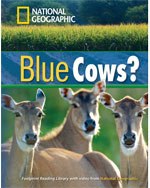
Blue Cows? Footprint Reading Library. Rob Warning (series editor). National Geographic (2009). ISBN-13: 978-1-4240-1087-5, pp 24. The series introduces the readers to the world through the sights and sounds which come from various parts of the globe. The material used in the books comes from National Geographic Digital Media library and is illustrated with National geographic high quality photography. The material has been adapted to suit the levels of the learners and the readers come at 8 different levels. The individual stories come as a reader, audio material and video film. The reader in question Blue Cows? is pitched at B1 level. The subject deals with cows in India, and to be precise the fact they are protected by religion which allows them to eat the farmers’ crops. Before the learners read the actual text, they can first become familiar with some key vocabulary and background information; in the case of this book the main principles of Hinduism. In the follow up section there are some multiple choice comprehension questions and an interview referring to the main story. This is a very good reader which introduces global issues and CLIL content.
For more go to
http://ngl.cengage.com/search/programOverview.do?N=+200+4294918440&Ntk=NGL|P_EPI&Ntt=PRO0000000023|&Ntx=mode+matchallpartial
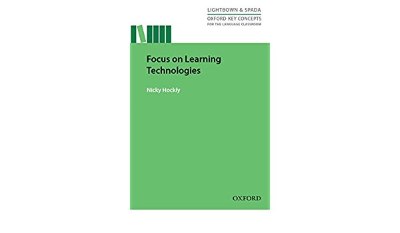
Focus on Learning Technologies. N. Hockly (2016) OUP. ISBN 978-0-19-400311-7, pp 167. This book is another title in the OUP series: Oxford Key Concepts for the Language Classroom, which focuses on key ELT areas and is aimed at teachers who work with learners aged 5-15. The books in the series can be seen as ‘instructional guides’ supported by a body a research on learning a foreign language and language teaching methodology relevant to practising teachers. The various points the books make are illustrated with glimpses from the classroom to show the practical applications. The theoretical part is dotted with activities to be used in class. The books in the series are suitable for more sophisticated readers such as MA and diploma candidates in language teaching, experienced teachers, mentors and teacher trainers. The series is edited by Patsy M. Lightbown and Nina Spada. The book in question first looks at language technologies in language teaching and the definition of ‘technologies’, a map of the field, history of CALL, and the so called ‘digital natives and digital immigrants’. Then it looks at various theories and frameworks of learning technologies, learning technologies for young learners, learning technologies for adolescent learners, and some relevant research. Do not miss the suggestion for further reading at the back of the book.
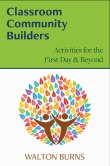
Classroom Community Builders. W. Burns. Alphabet Publishing. (2017). ISBN: 9780997762877, pp 161. This book is aimed both more and less experienced teachers of young learners and adults, including EFL and ESL teachers. The book is very practical: it starts with a very short introduction and then gives over 80 practical classroom ideas. Activities descriptions (or procedures) come with information on timing, materials, relevant photocopiable materials, visuals and information on the language the learners will need to engage in the activities. The procedure descriptions are very straightforward and easy to follow. The activities fall into four groups: setting expectation, working together, getting to know’ activities and getting to know the teacher activities. The book also offers some tips on building a learning community and things teachers need to consider when grouping learners. The publication is very useful becuse educators point toward the importance of healthy relationships in the classroom, the importance of building relationships and building a learning community. For more go to
www.alphabetpublishingbooks.com/book/classroom-community-builders/
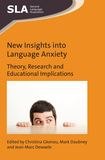
New Insights into Language Anxiety. Eds. C. Gkonou, M. Daubney and J-M. Dewaele. Multilingual Matters (2017) ISBN 978-1-78309-770-8, pp.226. This book is a collection of articles on the subject of language anxiety, including current theory, research and practice. It views the area from various perspectives and schools of thought. It is divided into three sections: theoretical insights, empirical investigations and implications for practice; the contributing authors include Elaine Horwitz, Zoltán Dörnyei and Zsuzsa Tóth. The articles will be of interest to various readers, experienced language teachers, mentors, teacher trainers, educators and MA or diploma candidates. The ones I personally found interesting and inspiring are those on anxiety and self-image, anxiety of perfectionists learning a foreign language, and the links between self-esteem and language anxiety. However, I am sure that readers interested in the adult learning environments in Japan or teaching Japanese learners in multinational classes may pick up: Social Anxiety and Silence in Japan’s Tertiary Foreign Language Classrooms. I am sure every reader will find something of interest, but I do recommend reading the introduction and conclusion by the three editors. For more go to
www.multilingual-matters.com/display.asp?K=9781783097708
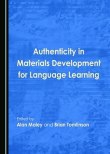
Authenticity in Materials Development for Language Learning. Eds. A. Maley and B. Tomlinson. Cambridge Scholars Publishing (2017). ISBN 9781443870507, pp 263. This book is a collection of articles harvested and edited by two people who in the EFL world do not need any introduction or recommendation. Their voices on language teaching, materials development and creativity could have been heard for at least four if not five decades. The fourteen articles which constitute the main body of the book, come from authors from all over the globe, however, many of them have been connected to UK universities. The contributors raise many issues regarding authenticity, ranging from theoretical considerations to practical e.g. authenticity in the digital era or context specific ones e.g. alternative teaching paradigm in Pakistan. The voices are original and unpredictable, touching upon issues that had not been addressed in ELT before. The main areas the editors highlight are authenticity of text, task, curriculum, learner and teacher, context and theoretical authenticity. The reader may not be interested in all the contributions to the same extent, but all of them are very informative and enlightening for materials and curriculum writers, practising teachers, teacher trainers, mentors and MA candidates.
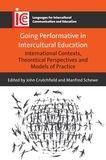
Going Performative in Intercultural Education. Eds. J. Crutchfield and M. Schewe (2017) Multilingual Matters. ISBN 978-1-78309-854-5, pp 258. Drama and the performative aspect in foreign language teaching has been present in EFL for decades, with important figures like Bernard Dufeu, Ken Wilson influenced by Viola Spolin, Sarah Philips with her book on drama for young learners, and, at Pilgrims, Peter Dyer with his very inspirational teacher training on voice, self-confidence and presence. However, this publication presents a field of ‘performative pedagogy’ that is about twenty years old, namely using drama for intercultural learning and understanding which takes the learners beyond the traditional language class and traditional understanding of literature and culture. The twelve contributors to the book come from various countries, continents and therefore various educational contexts. The areas they write about include among others improvisation in various cultural contexts, ethics of performative approaches, arts projects and cultural borders, and dramatic tension in intercultural engagement.

Please check the Methodology & Language for Primary course at Pilgrims website.
Please check the Methodology & Language for Secondary course at Pilgrims website.
Please check the Creative Methodology for the Classroom course at Pilgrims website.
Please check the Practical uses of Mobile Technology in the English Classroom course at Pilgrims website.
Please check the Practical uses of Mobile Technology in the English Classroom course at Pilgrims website.
Please check the Special Needs and Inclusive Learning course at Pilgrims website.
Please check the Teaching Advanced Students course at Pilgrims website.
Please check the English Language course at Pilgrims website.
Please check the How to be a Teacher Trainer course at Pilgrims website.


|